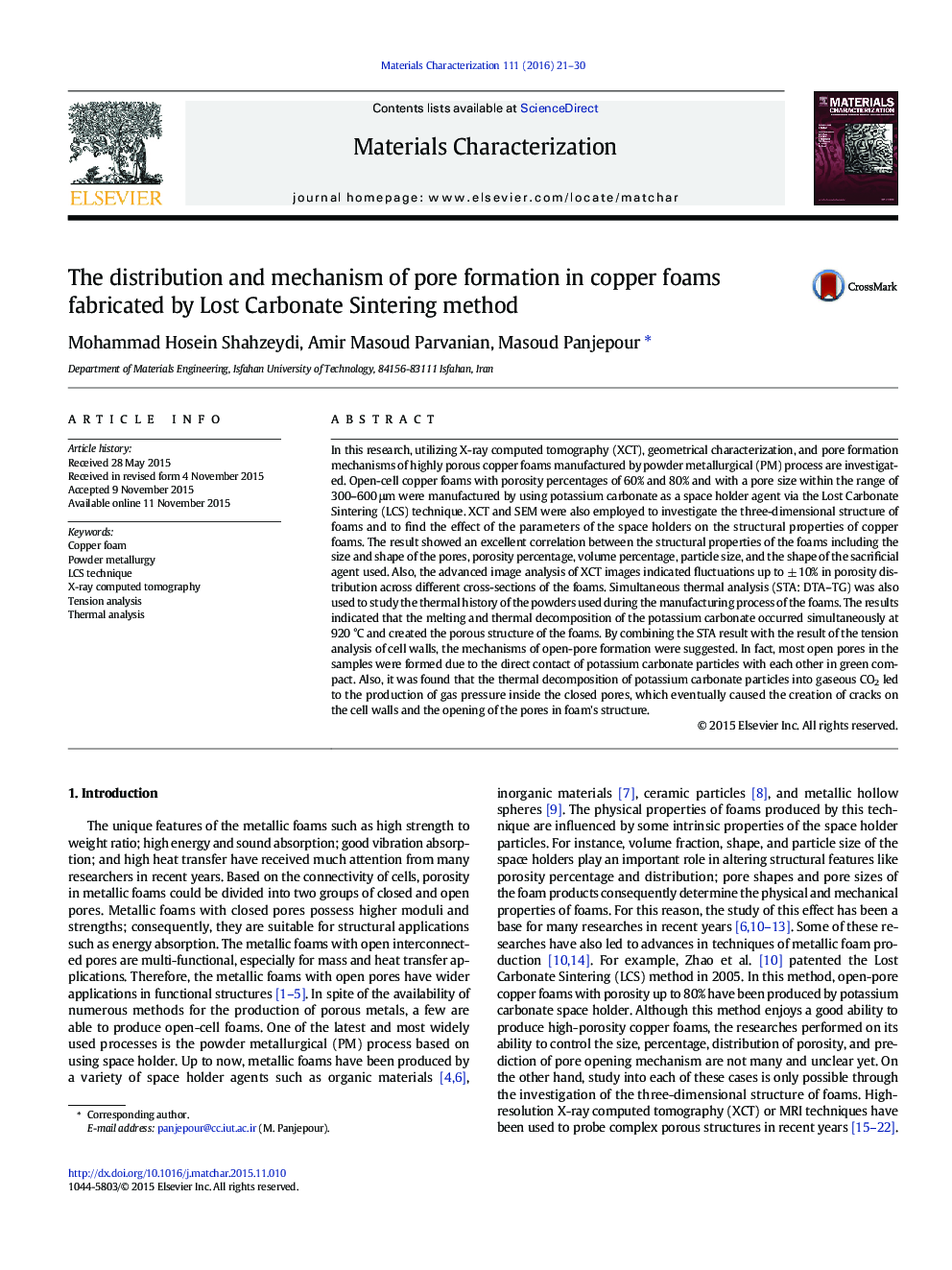| کد مقاله | کد نشریه | سال انتشار | مقاله انگلیسی | نسخه تمام متن |
|---|---|---|---|---|
| 1570769 | 1514376 | 2016 | 10 صفحه PDF | دانلود رایگان |
• Structural characterization of copper foam produced by LCS method is investigated by tomography images.
• The ability of LCS technique to control structural features of produced foams was proved.
• The mechanisms of open pores formation were presented.
In this research, utilizing X-ray computed tomography (XCT), geometrical characterization, and pore formation mechanisms of highly porous copper foams manufactured by powder metallurgical (PM) process are investigated. Open-cell copper foams with porosity percentages of 60% and 80% and with a pore size within the range of 300–600 μm were manufactured by using potassium carbonate as a space holder agent via the Lost Carbonate Sintering (LCS) technique. XCT and SEM were also employed to investigate the three-dimensional structure of foams and to find the effect of the parameters of the space holders on the structural properties of copper foams. The result showed an excellent correlation between the structural properties of the foams including the size and shape of the pores, porosity percentage, volume percentage, particle size, and the shape of the sacrificial agent used. Also, the advanced image analysis of XCT images indicated fluctuations up to ± 10% in porosity distribution across different cross-sections of the foams. Simultaneous thermal analysis (STA: DTA–TG) was also used to study the thermal history of the powders used during the manufacturing process of the foams. The results indicated that the melting and thermal decomposition of the potassium carbonate occurred simultaneously at 920 °C and created the porous structure of the foams. By combining the STA result with the result of the tension analysis of cell walls, the mechanisms of open-pore formation were suggested. In fact, most open pores in the samples were formed due to the direct contact of potassium carbonate particles with each other in green compact. Also, it was found that the thermal decomposition of potassium carbonate particles into gaseous CO2 led to the production of gas pressure inside the closed pores, which eventually caused the creation of cracks on the cell walls and the opening of the pores in foam's structure.
Journal: Materials Characterization - Volume 111, January 2016, Pages 21–30
